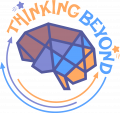According to a study by HGSE lecturer Christina Hinton, Ed.D., she examined the interplay of happiness, motivation,
and success in a Kindy – 12 year olds setting, and found “students often reported that happiness, or positive feelings
like enjoyment or fun, promotes learning.”
Happiness researcher, author and speaker Shawn Achor, has found that our brains work 31 per cent more effectively
when we are happy.
Hence happiness does have a considerable impact on learning. Schools or centers that support whole-child
development and teachers who facilitate holistic learning help create a vibrant environment that can inspire their
students to reach their highest potential.
First there is happiness or joy; then comes cognition. Explanation in a nutshell: positive feelings tend to help us
remember complex things. If our young learners feel happy and secure, they will find learning more enjoyable and
motivating.
The ANSWER is YES. Children learn better when they are happy.

What strategies can we then apply to help our kids develop positive emotions to learn?
Give our kids happy-healthy childhood
Help to give a balanced childhood in order to set them up for greater success in their future. Make sure they come
mentally secure and emotionally ready to pick up learning-thinking skill sets that will allow them to meet academic
and non-academic challenges.
Encourage play and rest
Kids should have the time to play with friends or self-explore both indoors and outdoors in order to make them less
dull. Critical social skills kids pick up are empathy, engagement and self-control. Exploration with supervision hones
curiosity, creativity and critical thinking skills.
Limit screentime
Our time during wakefulness is finite. So, it is important to consider a kid’s screentime and time for sports, hobbies
and little ‘projects’ plus work and play. Do set clear rules on how much screentime they should get and what they
use that time for. More screentime doesn’t mean a happier child. It might even be the converse.
Develop confidence and persistence
Help a child learning a new thing by allowing him to activate prior knowledge and experience and to connect to what
he is currently learning. Encourage him and tell him how far he has come. This will build confidence. Even failed
efforts are not wasted efforts but part of a learning curve. Working on ‘chunks’ or manageable tasks allows step-by-
step success and gives the child the determination to succeed.
Avoid over-indulging our kids
Overindulgence, especially with giving-in to a child’s tantrums or thinking that a child’s happiness stems from
material gifts that parents must meet, will not help your child grow up healthily. Reward system might work but
tread carefully to make sure that the act is not a means to an end. Teach children about ‘process’ and ‘experience’ so
they can build the idea of creating happiness through gathering memories and experiencing the moments and not
the ideas of ‘ownership’ and ‘possessing’.
We need to make learning fun and enjoyable especially for the younger kids. When our young learners do enjoyable
tasks, they may not even think they are learning. They are having fun or being focused and in a state of flow, they
will continue with their tasks even if they do not get rewarded. One cannot force such motivation (called INTRINSIC
MOTIVATION).
Realise that happiness is a critical factor for successful learning. When we feel positive emotions, hormones that
relate to an improvement in memory and drive, are being released from the brain. In short: happiness makes an
effective booster for retention-retrieval and successful learning.
The opposite is also true: anxiety, stress and sadness affect our learning performances negatively. Anxiety affects our
short-term memory. Stress impacts negatively on our long-term memory.
At THINKING BEYOND, WE …
Focus on learner engagement by giving our kids customized coursework and activities with just the right amount of
challenge to meet their level of cognitive skills and pace of learning. We recognise children learn better when they
are happy.
SO WE…
- Tailor the content to meet individual learner’s needs.
- Aim for purposeful fun learning with varied activities at different stations, without losing sight of the real goal –
cognitive training and development. - Realise our trainers must not be boring teachers but should inculcate a sense of humor among the children in
order for them to learn to look at school work and otherwise ‘unfun’ assignments in more positive light. Then, they
get to be more open and receptive to new learning materials. - Focus on “activating” interest. Hence our Structure of Intellect materials are different from academic work yet
target at learning with academic success.
CONCLUSION
Preserving the happiness every child should intrinsically possess, we aim to help every learner to discover hidden
talents and dormant cognitive capabilities. We want them to joyfully learn what puzzles them and actively search out
answers, even failing while doing so. We want leaners to put their new knowledge gained to good application and to
stimulate them to think and act positively.
In short, we want to stimulate students to think or act in an environment where they feel they can trust and believe
in and where they are confident and determined to succeed. Happy learners are better learners. So, their emotional
state counts and pacing the customized work set for them is their first step to successful learning.
